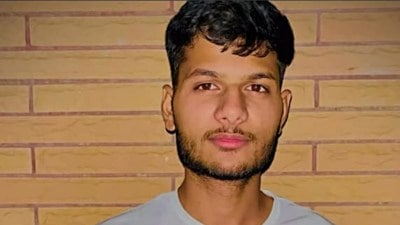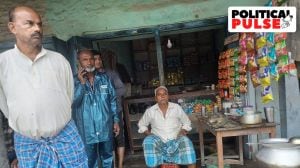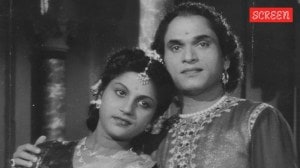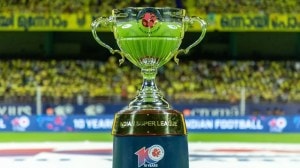The placard: Overhead, oversized, chasing cameras
The Congress went fancier from day two, with printed slogans in multiple colours.
 Congress party workers raise slogans at a protest against the suspension of party’s 25 Members of Parliament from Lok Sabha, in Nagpur on Tuesday. (Source: PTI Photo)
Congress party workers raise slogans at a protest against the suspension of party’s 25 Members of Parliament from Lok Sabha, in Nagpur on Tuesday. (Source: PTI Photo)
It is not as potent as pepper spray or as unusual as slogans on umbrellas, but the placard has defined the monsoon session and magnified the Congress’s strength of 44 in the Lok Sabha. Its size growing, its placement shifting, the placard contributed in large part to the suspension of 25 MPs.
Congress MPs had been carrying the placards inside from day one. The initial size was modest, a tad larger than an A3 sheet. Yet they drew attention, with slogans such as “Bade Modi meherban to chhote Modi pehelwan” and “Modiji 56 inch dikhao, Sushma, Raje ko turant hatao”.
[related-post]
The Congress went fancier from day two, with printed slogans in multiple colours. BJP members countered these with paper posters, a rather hurried job, with slogans such as “C for corruption, C for Congress”.
Improvisation came when it became clear that Lok Sabha TV was not showing either the protesters in the well or their placards. On July 31, the 10th day, the placards doubled in both length and breadth. “These were 2 feet × 4 feet. The earlier ones had been 1×2. Our protest was not being seen by the outside world,” an MP said.
Rajeev Satav was in charge of getting the placards made. The former Youth Congress president used his “old setup”. The slogans are the work of the communications department and the “Youth Congress boys”.
Younger MPs Gaurav Gogoi, Ravneet Singh Bittu and Satav would carry the placards inside from the CPP office and back. Inside, Ninong Ering, Sushmita Dev, Adhir Ranjan Chowdhury, Deepender Hooda and Mausam Noor would hold these aloft.
Although the placards were larger, catching the camera was still proving difficult. Then Rahul Gandhi got into the act. He asked MPs to raise the placards above their heads so that they could be seen on television. Hooda was seen bringing more placards distributing to those standing in the well. A Congress MP said Rahul even walked around the House inspecting the camera positions.
It was decided later that members carrying placards would stand in front of ministers on the other side of the well. The idea was to catch the cameras focused on either the Speaker or the minister who was speaking at the moment.
The Congress members were constantly improvising. For instance, Satav was not in the House last Friday. He could not see the placards his colleagues were holding aloft as by then television cameras were focusing on the Speaker from the side too. Finally, Congress members stood on both sides of the Speaker.



- 01
- 02
- 03
- 04
- 05




























